Fujitsu Client Computing WB0103 FUJITSU STYLISTIC Q series User Manual
Fujitsu Limited FUJITSU STYLISTIC Q series
User Manual
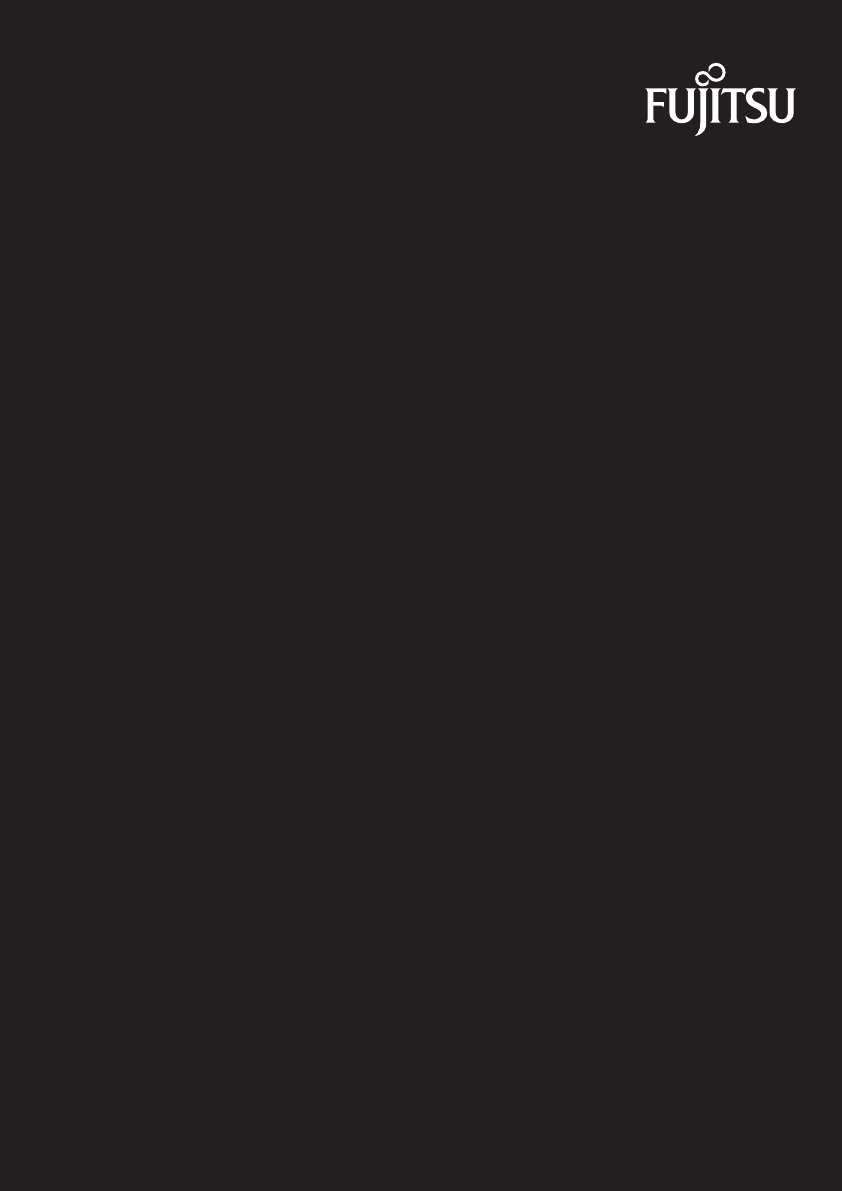
User Manual
STYLISTIC
STYLISTIC Q507
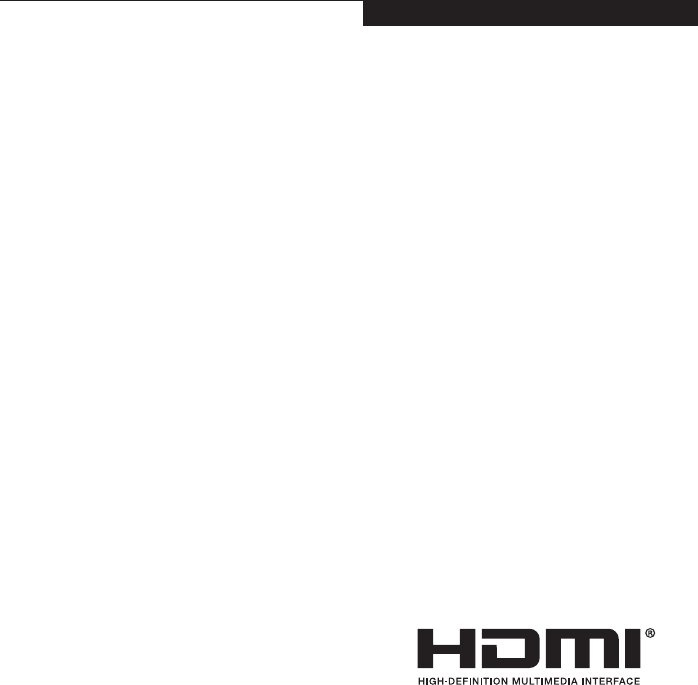
i
Legal Notices
No part of this publication may be copied,
reproduced or translated, without the prior
written consent of Fujitsu. No part of this
publication may be stored or transmitted in
any electronic form without the written
consent of Fujitsu.
Legal Notices
Fujitsu, the Fujitsu logo and STYLISTIC are
trademarks or registered trademarks of Fujitsu
Limited in the United States and other
countries. Windows is a trademark or registered
trademark of Microsoft Corporation in the
United States and other countries. Intel is a
trademark or registered trademark of Intel
Corporation in the United States and other
countries. The terms HDMI and HDMI High-
Definition Multimedia Interface, and the HDMI
Logo are trademarks or registered trademarks
of HDMI Licensing, LLC in the United States
and other countries. All other trademarks
referenced herein are the property of their
respective owners.
The statements provided herein are for
informational purposes only and may be
amended or altered by Fujitsu America, Inc.
without notice or liability. Product description
data represents Fujitsu design objectives and is
provided for comparative purposes; actual
results may vary based on a variety of factors.
Specifications are subject to change without
notice.
Fujitsu America, Inc. has made every effort to
ensure the accuracy and completeness of this
document. However, as ongoing development
efforts are continually improving the capabilities
of our products, we cannot guarantee the
accuracy of the contents of this document. We
disclaim liability for errors, omissions or future
changes.
Copyright© 2017 Fujitsu America, Inc.
All rights reserved.
Website: www.fujitsu.com/us

ii
IMPORTANT SAFETY
INSTRUCTIONS
Read these instructions carefully. Save these
instructions for future reference.
Follow all warnings and instructions marked
on the product.
Unplug this product from the wall outlet
before cleaning. Do not use liquid cleaners
or aerosol cleaners. Use a damp cloth for
cleaning.
Do not use this product near water.
Do not place this product on an unstable
cart, stand or table. The product may drop,
causing serious damage to the product.
Slots and openings in the cabinet and the
back or bottom are provided for ventilation;
to ensure reliable operation of the product
and to protect it from overheating, these
openings must not be blocked or covered.
The openings should never be blocked by
placing the product on a bed, sofa, rug or
other similar surface. This product should
never be placed near or over a radiator
or heat register or in a built-in installation
unless proper ventilation is provided.
This product should be operated from the
type of power indicated on the marking
label. If you are not sure of the type of power
available, consult your dealer or local power
company.
Do not allow anything to rest on the power
cord. Do not locate this product where
persons will walk on the cord.
1.
2.
3.
4.
5.
6.
7.
8.
If an extension cord is used with this product,
make sure that the total ampere rating of the
equipment plugged into the extension cord
does not exceed the extension cord ampere
rating. Also make sure that the total rating of
all products pugged into the wall outlet does
not exceed 15 amperes.
Never push objects of any kind into this
product through cabinet slots as they may
touch dangerous voltage points that could
result in a re or electric shock. Never spill
liquid of any kind on the product.
Do not attempt to service this product
yourself, as opening or removing covers
may expose you to dangerous voltage points
or other risks. Refer all servicing to qualied
service personnel.
Unplug this product from the wall outlet and
refer servicing to qualied service personnel
under the following conditions:
When the power cord or plug is damaged
or frayed.
If liquid has been spilled into the product.
If the product has been exposed to rain or
water.
If the product dose not operate normally
when the operating instructions are
followed. Adjust only those controls that
are covered by the operating instructions
since improper adjustment of other controls
may result in damage and will often require
extensive work by a qualied technician to
restore the product to normal condition.
If the product has been dropped or the
cabinet has been damaged.
If the product exhibits a distinct change in
performance, indicating a need for service.
9.
10.
11.
12.
a.
b.
c.
d.
e.
f.
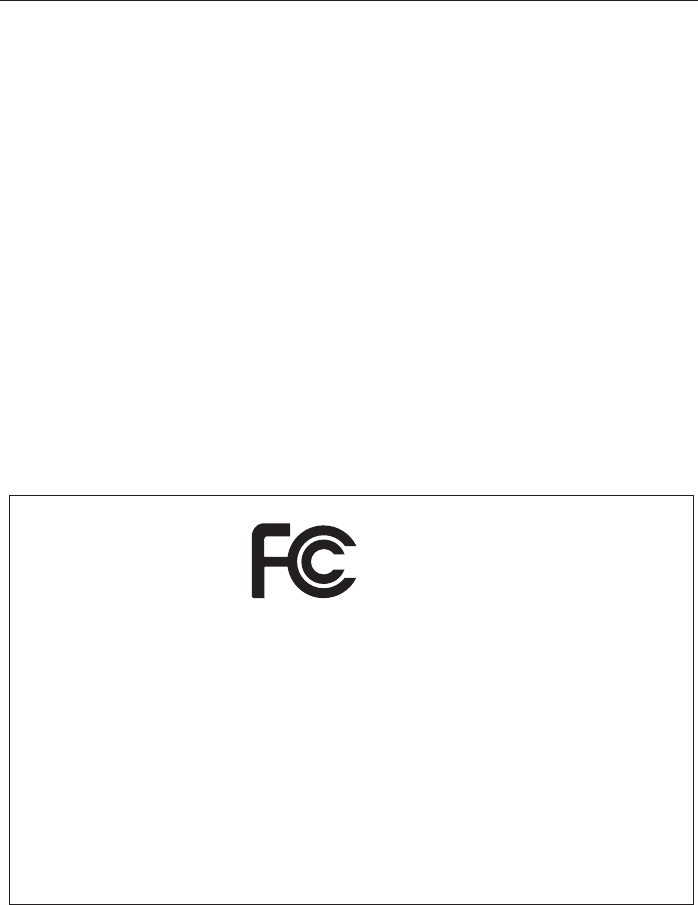
iii
CAUTION: When replacing the
battery, be sure to install it with the
polarities in the correct position.
There is a danger of explosion if the
battery is replaced with an incorrect
type or is mistreated. Do not
recharge, disassemble or dispose of
in fire. Replace only with the same
or equivalent type recommended
by the manufacturer. Dispose of
the used battery according to the
manufacturer’s instructions.
Use only the proper type of power cord
set(provided in the accessories box)
for this unit. It should be detachable
type and with respective certification.
Maximum length is 15 feet (4.6 meters).
13.
14.
Declarations of conformity
DECLARATION OF CONFORMITY
according to FCC Part 15
Responsible Party Name:
Address:
Telephone:
Declares that product:
Fujitsu America, Inc.
1250 E. Arques Avenue
Sunnyvale, CA 94085
(408) 746-6000
Base Model Configuration: STYLISTIC Q507 Tablet PC
Complies with Part 15 of the FCC Rules.
This device complies with Part 15 of the FCC rules. Operations are subject to the
following two conditions: (1) This device may not cause harmful interference. (2) This
device must accept any interference received, including interference that may cause
undesired operation.

iv
Changes or modifications not expressly
approved by Fujitsu could void this user’s
authority to operate the equipment.
FCC NOTICES
Notice to Users of Radios and Television
These limits are designed to provide reasonable
protection against harmful interference in
a residential installation. This equipment
generates, uses, and can radiate radio
frequency energy and, if not installed and used
in accordance with the instructions, may cause
harmful interference to radio communications.
However, there is no guarantee that interference
will not occur in a particular installation. If this
equipment does cause harmful interference
to radio or television reception, which can be
determined by turning the equipment off and
on, the user is encouraged to try to correct the
interference by one or more of the following
measures:
• Reorient or relocate the receiving antenna.
• Increase the separation between the
equipment and receiver.
• Connect the equipment into an outlet that is
on a different circuit than the receiver.
• Consult the dealer or an experienced radio/
TV technician for help.
Shielded interconnect cables must be employed
with this equipment to ensure compliance with
the pertinent RF emission limits governing this
device.

v
This equipment may not be used on a
telephone provided by your telephone
company. Connection to party lines is subject
to state tariffs. Contact your state’s public
utility commission, public service commission
or corporation commission for more information.
This equipment includes automatic dialing capability.
When programming and/or making test calls to
emergency numbers:
• Remain on the line and briey explain to the
dispatcher the reason for the call.
• Perform such activities in off-peak hours,
such as early morning or late evening.
FCC rules prohibit the use of non-hearing aid
compatible telephones in the following locations
or applications:
• All public or semipublic coin-operated or
credit card telephones.
• Elevators, highways, tunnels (automobile,
subway, railroad or pedestrian) where a
person with impaired hearing might be
isolated in an emergency.
• Places where telephones are specifically
installed to alert emergency authorities
such as fire, police or medical assistance
personnel.
• Hospital rooms, residential health care
facilities, convalescent homes and prisons.
• Workstations for the hearing impaired.
• Hotel, motel or apartment lobbies.
• Stores where telephones are used by
patrons to order merchandise.
• Public transportation terminals where telephones
are used to call taxis or to reserve lodging or
rental cars.
• In hotel and motel rooms as at least ten percent
of the rooms must contain hearing aid
compatible telephones or jacks for plug-in
hearing aid compatible telephones which will
be provided to hearing impaired customers
on request.
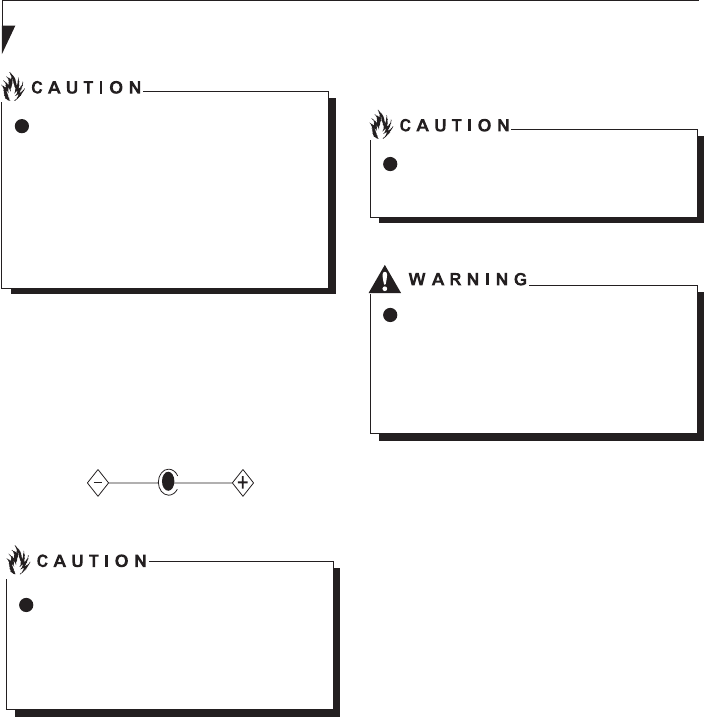
vi
For safety, users should ensure that the
electrical ground of the power utility, the
telephone lines and the metallic water
pipes are connected together.
Users should NOT attempt to make such
connections themselves but should contact
the appropriate electric inspection authority
or electrician. This may be particularly
important in rural areas.
UL Notice
This unit requires an AC adapter to operate.
Use only UL Listed I.T.E. adapters with an
output rating of 12 VDC, with a minimum
current of 3A (36W). Refer to the illustration
below for the correct AC Adapter output
polarity:
For Authorized Repair Technicians Only
For continued protection against risk of re,
replace only with the same type and rating
fuse.
Danger of explosion if Lithium Ion
battery is incorrectly replaced. Replace
only with the same or equivalent type
recommended by the manufacturer.
.
Dispose of used batteries according to the
manufacturer’s instruction.
Proper Disposal of Battery
Under federal, state or local law, it may be illegal to
dispose of batteries by putting them in the rubbish
bins or trash cans. Please take care of our environment
and dispose of batteries properly for details regarding
recycling or disposing of unwanted batteries.
Operating Temperature 41F° to 95°F (-10°C to 60° C)
Hazardous optical radiation may be
emitted from the camera flash. Do not
operate the flash within 11 in. (284mm)
of a person.

vii
NOTE ON USE REQUIRED HIGH
SAFETY
Notice to Users of Radios and Television
This product is designed and manufactured
for general use, household use and ordinary
industrial use.
This product is not designed for or intended for
use under dangerous conditions, unless
extreme safety precautions are impemented.
Do not use this product without implementing
high-level safety precautions.
Failure to follow this warning may result in
death. personal injury, severs physical
damage or other loss, if used in or near any or
more of the following:
• nuclear reaction control system in a nuclear
facility
• automatic ight control system in an airplane
or other ight control system
• mass transport control system
• medical instruments for life support system
• missile launching control for weapon system
NOTE ON BACKUP DATA
Please make a backup of the Operating
System, any software programs, and created
les (and update regularly).
If you send this product to Fujitsu, or any of
its affiliates, suppliers, service providers or
resellers for repair, Fujitsu does not guarantee
the data integrity. It is your responsibility to
back data up beforehand.
Fujitsu dose not assume any obligation for
compensation for damages, data integrity,
or restoration, etc., if your data is lost for any
reason, except as written in the warranty.

viii
Fujitsu STYLISTIC® Q507
Table of Contents
1
PREFACE
About the Guide................................................2
2
GETTING TO KNOW YOUR
STYLISTIC
Locating the Controls and Connectors
Top and Side Panel Components .....................4
Bottom and Side Panel Components ...............5
Right Side Panel Components .........................6
Left Side Panel Components ............................7
Running the Tablet PC on its Battery
Recharging the Battery......................................8
Running the Tablet on its Battery.......................9
Low Battery Condition.....................................10
Using the Stylus Pen
Setting the Pen ...............................................12
Using the Integrated Digitizer .........................13
3
USING YOUR STYLISTIC
Power Sources
Connecting the AC Adapter ............................15
Starting Your Tablet PC
Power On ......................................................16
Boot Sequence ...............................................16
Warranty Registering for Your
Fujitsu STYLISTIC Q507................................16
Power Management
Power/Suspend/Resume Button ....................17
Suspend Mode ...............................................17
Hibernation (Save-To-Disk) Feature ...............18
Windows® Power Management .....................19
Power Off .......................................................19
4
TROUBLESHOOTING
WLAN Specifications
Troubleshooting
WLAN Specifications
Identifying the Problem ................................21
WLAN Specifications ...................................22
5
FCC and IC
Regulatory
Information
FCC and IC Regulatory
Information
FCC and IC Regulatory Information ............24
Export Restrictions........................................25
Canada, Industry Canada (IC) Regulatory
Information....................................................27
Bluetooth Regulatory Information.................28

1
Preface
Preface
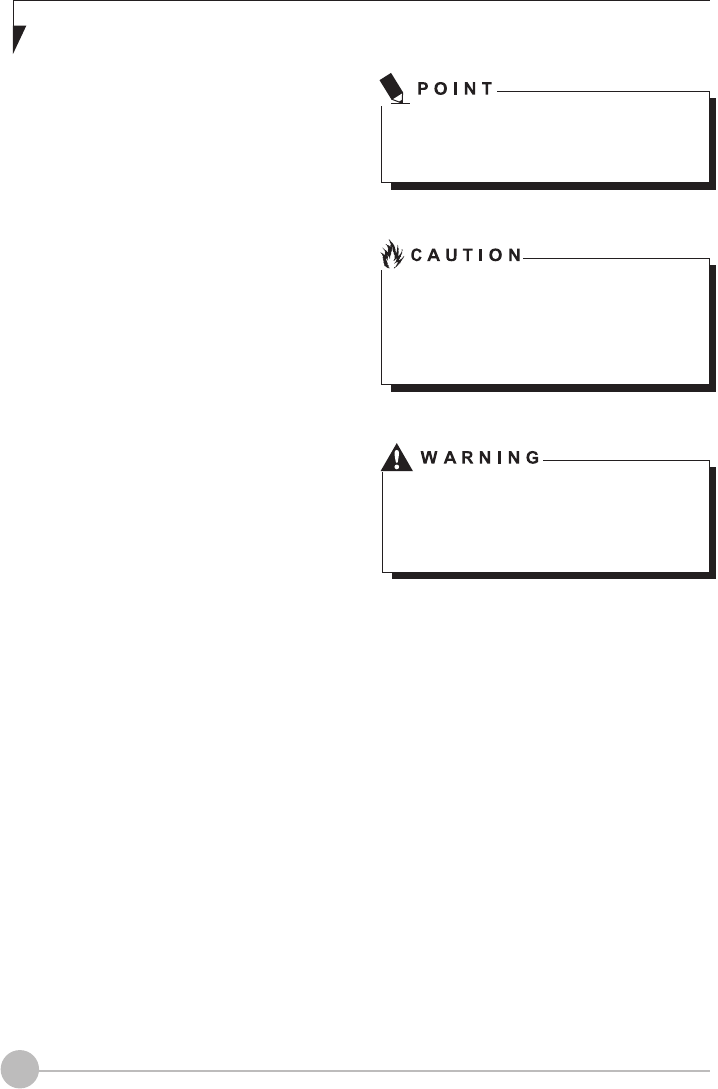
2
Preface
About This Guide
The Fujitsu STYLISTIC Q507 from Fujitsu is a
powerful convertible Tablet PC computer. It can
be used either as a standard Tablet PC using
keyboard input, or in tablet configuration using
pen input. It is powered by an Intel®
microprocessor, has a built-in color touch
screen display for a portable and versatile
environment.
Your Fujitsu STYLISTIC Q507 is a completely
self contained unit with an active-matrix(TFT),
touchscreen color LCD display. It has a powerful
interface that enables it to support a variety of
optional features.
Conventions used in the Guide
Keyboard keys appear in brackets.
Example: [Fn], [F1], [Esc], [Enter] and [Ctrl].
Pages with additional information about a specic
topic are cross-referenced within the text.
Example:(See page xx.)
On screen buttons or menu items appear bold.
Example: click OK to restart your STYLISTIC.
DOS commands you enter appear in Courier type.
Example: Shut down the computer?
The point icon highlights information that
will enhance your understanding of the
subject material.
The caution icon highlights information
that is important for the safe operation
of your computer, or for the integrity of
your files. Please read all caution
information carefully.
The warning icon highlights information
that can be hazardous to either you, your
computer, or your files. Please read all
warning information carefully.

3
Getting to Know Your
STYLISTIC
Getting to Know Your STYLISTIC
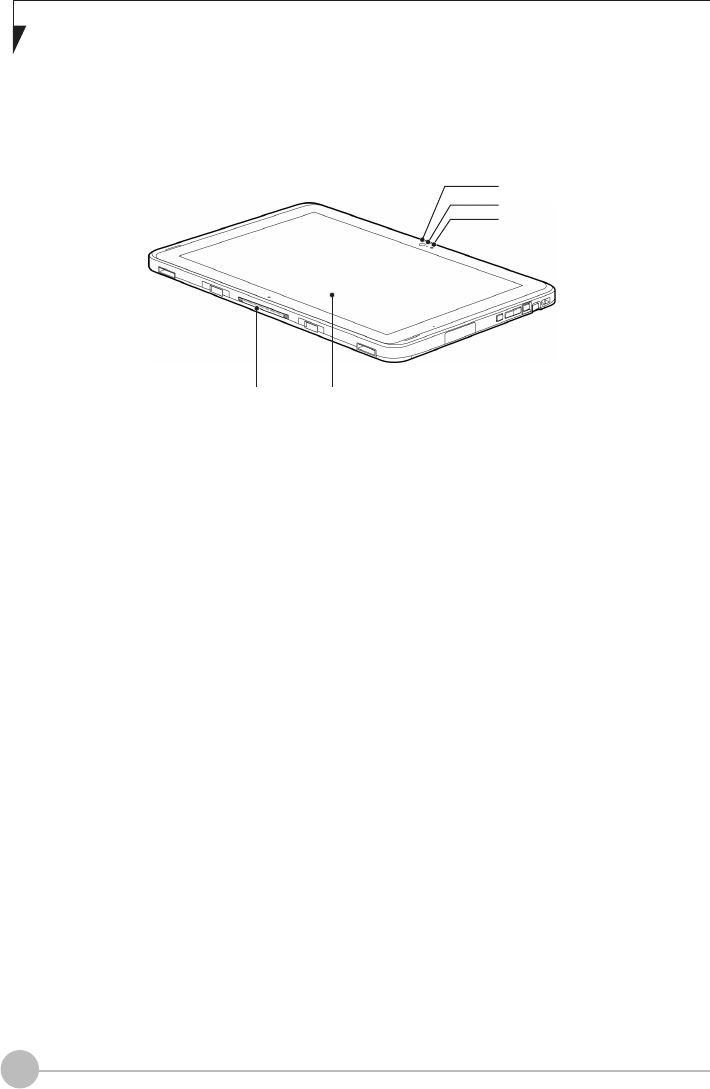
4
Locating the Controls and Connectors
The following is a brief description of the top and
side features of the Fujitsu STYLISTIC Q507.
Top and Left Side Panel Components
(This picture is for illustration purpose only and may look different from the actual unit)
1
2
3
Ambient Light Sensor
Webcam Status LED
Webcam Camera
Docking Connector
LCD Display
1.
2.
3.
4.
5.
54
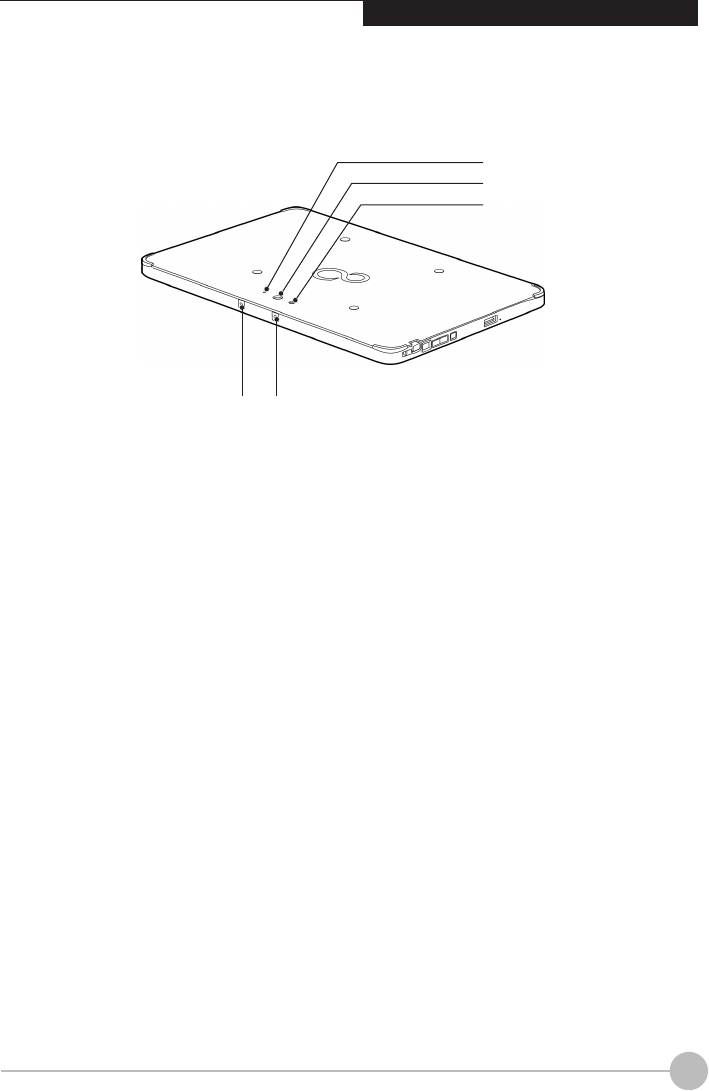
5
Getting to Know Your STYLISTIC
Bottom and Side Panel Components
Rear Webcam LED
Rear Webcam Status LED
Rear Webcam
Built-in microphone
1.
2.
3.
4.
(This picture is for illustration purpose only and may look different from the actual unit)
4 4
1
2
3
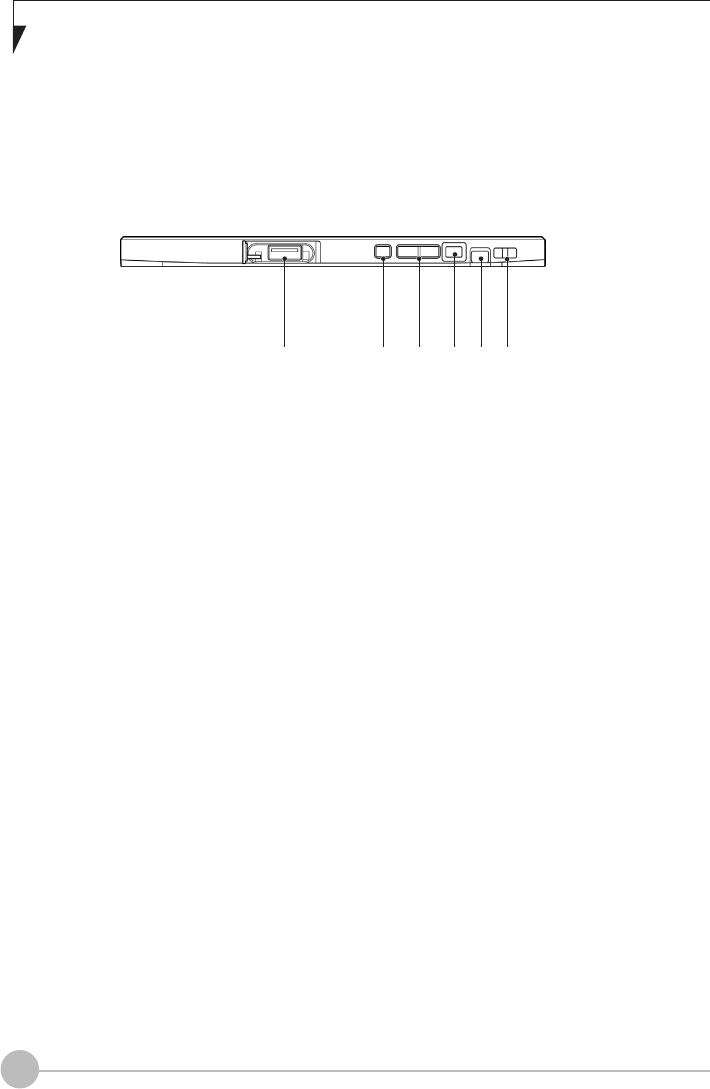
6
USB 3.0 Port
Shortcut Button
Volume Down and Up
Power Button
Pen/Pen Garage
Pen Tether Hole
1.
2.
3.
4.
5.
6.
Right Side Panel Components
(This picture is for illustration purpose only and may look different from the actual unit)
1 2 3 4 5 6
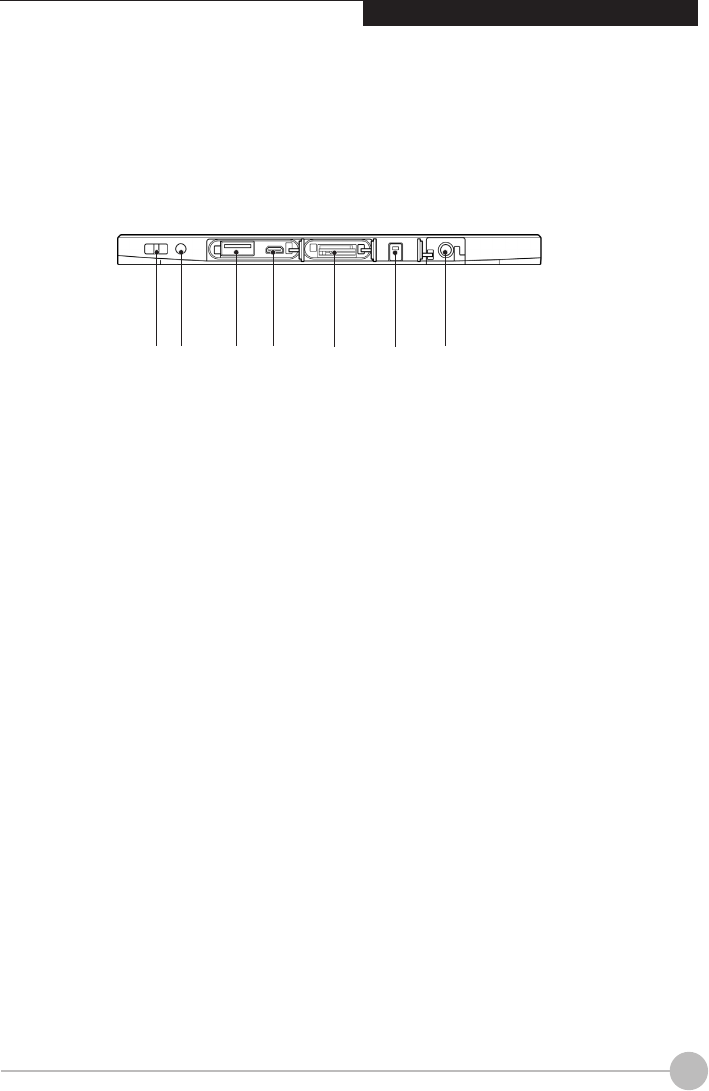
7
Getting to Know Your STYLISTIC
Left Side Panel Components
Pen Tether Hole
Audio Combo Jack
USB 3.0 Port
Micro HDMI
1.
2.
3.
4.
(This picture is for illustration purpose only and may look different from the actual unit)
Micro SD, Nano SIM Card Slot
Battery Charging LED
DC-in
5.
6.
7.
1 2 3 4 5 6 7
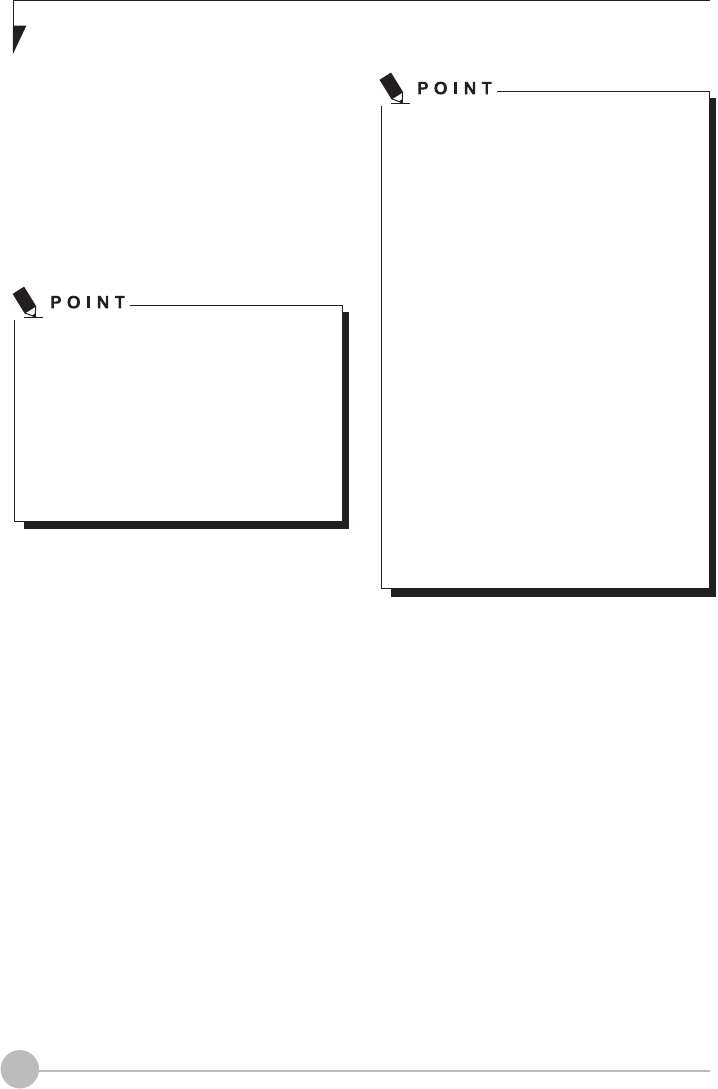
8
Running the Tablet PC on its
Battery
Recharging the battery
Connect the AC adapter to your Tablet PC. The
moment you connect the AC adapter to your
Tablet PC, the Tablet PC will begin to charge
the internal standard battery. The Indicator
LED will turn on.
•
•
Before using the supplied battery for
the very first time after purchase,
remember to charge it fully. If a
charged battery has not been charged
for more than a month, charge if fully
before using it.
When the battery is fully charged, the
Status Indicators turn off.
•
•
•
•
•
When the battery is 90% or more
charged, it cannot be recharged even if
the AC adapter is connected. The
battery can be recharged when its
power level (i.e. remaining battery life)
is 89% or less.
When a Tablet PC is turned off, all
indicators on the status LED go off
immediately if the battery is
completely charged.
The chargeability of the battery
degrades when it is used in extremely
hot or cold conditions.
When the battery is very hot, for
example immediately after long usage
of the Tablet PC, the battery protection
feature may be activated to prevent the
battery from being recharged. When
the temperature decreases, the Tablet
PC automatically begins to charge the
battery. When an optional modular
bay battery is installed, it is charged
along with the internal standard battery.
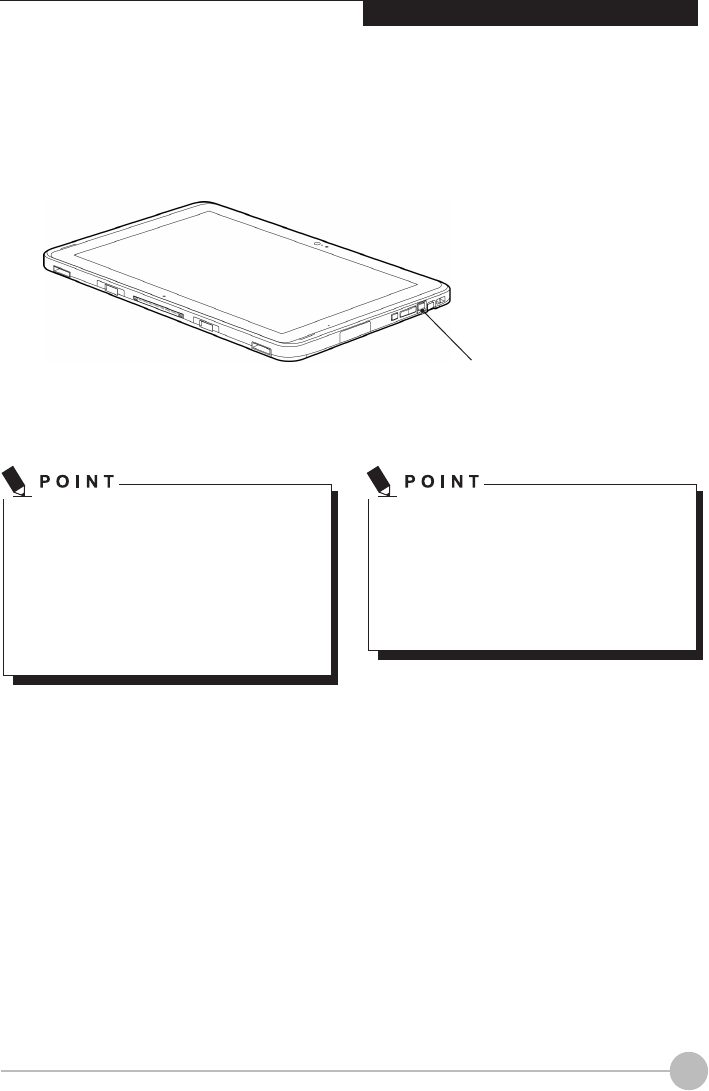
9
Running the Tablet PC on its Battery
This section describes the steps to run the Tablet
PC on its internal standard battery.
Power Button
Disconnect the AC adapter from your Tablet PC
and press the power button.
•
•
•
The power level of the battery
decreases faster when it is used in cold
conditions.
The chargeability of the battery
decreases after it has been used over
a long period of time. If the battery runs
down very fast, replace it with a new
battery.
When the battery is 90% or more
charged, it cannot be recharged. The
battery can be recharged when its
remaining power is 89% or less.
Getting to Know Your STYLISTIC
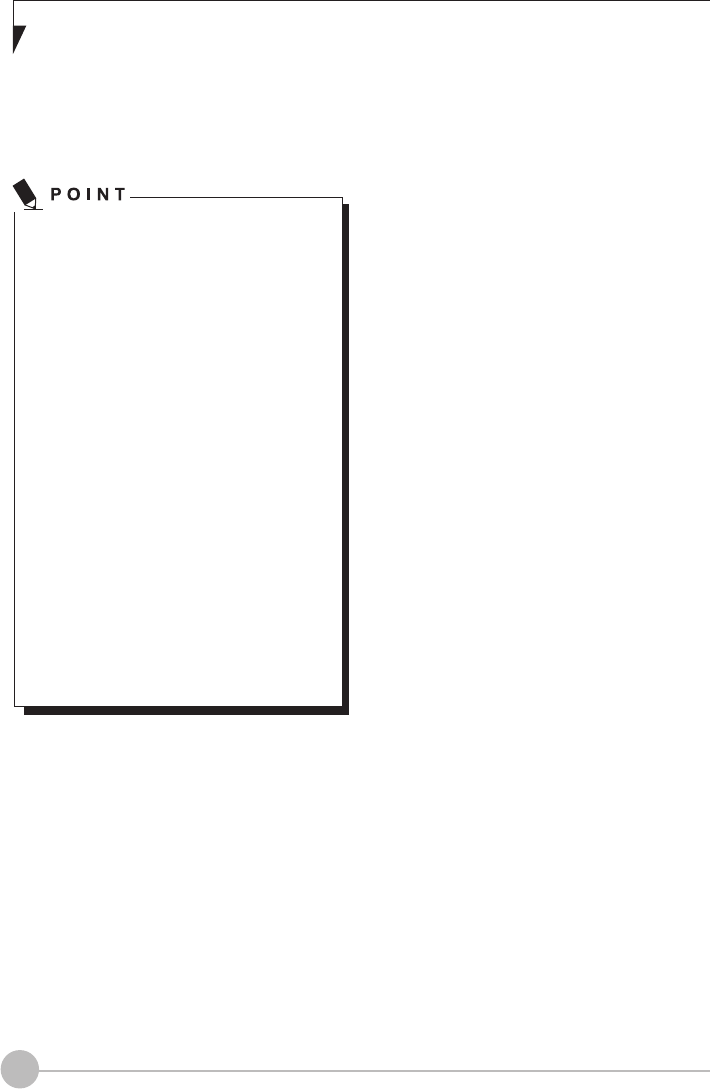
10
Low Battery Condition
When the battery is discharged to a very low
level, connect the AC adapter to your Tablet PC
immediately to recharge the battery.
•
•
•
•
The use of a weak battery may result
in loss of data you are currently
working on. When the battery runs
low, connect the AC adapter to your
Tablet PC as soon as an external
power source is available or
immediately save the data you are
working on, exit all applications
and turn off the Tablet PC.
Accessing data on the hard disk
consumes a lot of power. Therefore
when the battery is weak, connect an
AC adapter to the Tablet PC before
accessing data on the hard disk.
If a battery is weak and there is no
system activity, the Tablet PC may
go into standby(i.e. suspend) mode.
However, if there is system activity,
the Tablet PC will go into standby
mode only after the system activity has
completed its processing.
The Tablet PC will go into standby
mode when the power indicator
reaches 3%. This is the default
setting of the Tablet PC.
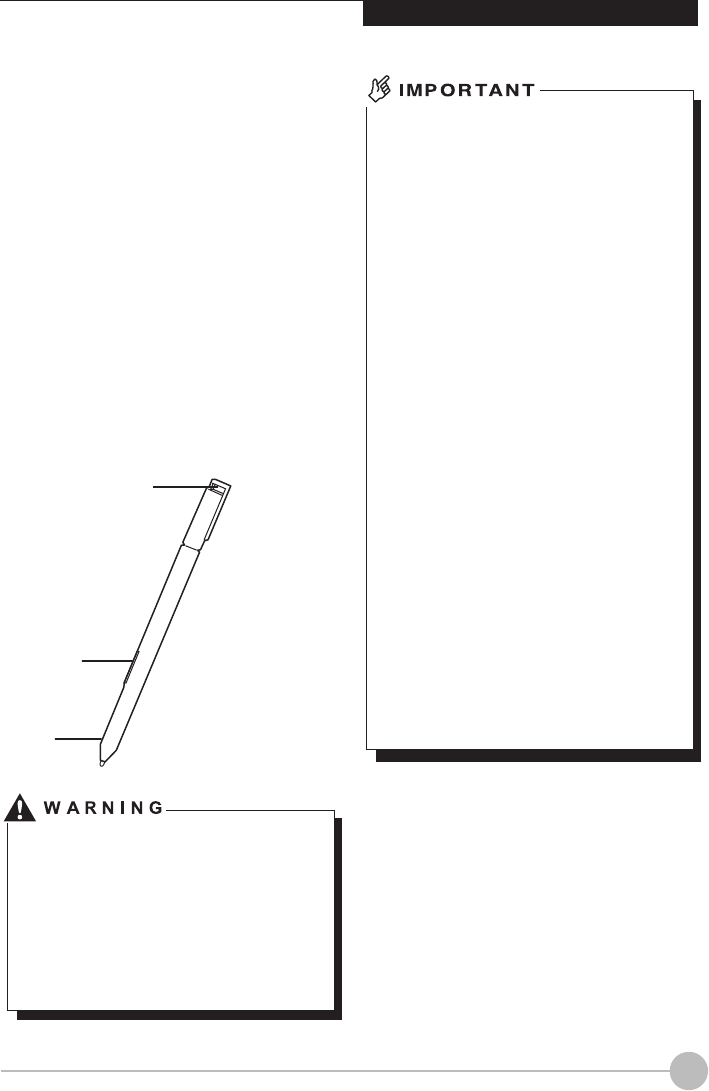
11
Getting to Know Your STYLISTIC
Using the Stylus Pen*
You can use the pen on your Tablet PC as an
electronic writing implement to select items
and to navigate through menu options and
programs. Programs that support handwriting
recognition also allow you to write directly on
the screen with the pen. You can also use the
pen as a drawing tool.
The Tablet PC pen is retained securely in the
pen garage. This ensures that the pen cannot
be lost, regardless of whether you use the
Tablet PC as as a tablet or while traveling.
Always replace the pen in its garage when you
are not using it.
The Tablet PC is supplied with a pen cord which
you can attach to the eyelets on the pen and on
the Tablet PC.
* Only specific STYLISTIC Q507 can support
a stylus pen
Eyelet for Pen Tether
Pen Button
Pen Tip
Fujitsu STYLISTIC Q507 Pen
•
•
Only use the pen provided with your
Tablet PC. Do not use substitute pen
tips that were not specially designed
for your Tablet PC. Replace the stylus
tip if it is worn. The warranty does not
cover a scratched screen.
While writing, you should take care not
to scratch the surface of the display.
(e.g. with a wrist watch or bracelet.)
The pen of your Tablet PC is an electronic
instrument which can be damaged if used
incorrectly. Handle the pen with care. The
following list contains guidelines for proper
pen handling:
• Do not gesture with the pen.
• Do not use the pen as a pointer.
• Never use the pen on any other surface
than the screen of your Tablet PC.
• Do not try to turn the thumb grip on the
pen. The thumb grip is used to place the
pen in its slot and to take it out of the slot.
•When you're not using the pen, only store
it in the pen garage.
•Don't store it in anyway that the pen tip
has weight bearing down on it. Don't stick
it down into the pen holder inside your
briefcase or backpack, pocket protector,
etc, where the pen tip might be shoved
against the bottom of the holder and be
constantly pressed because that can
cause damage.
•Don't store it in any kind of vertical up/
down position that could allow weight to be
placed on the tip.
The pen can be inuenced by electromagnetic
elds(cursor quivers or jumps). There may
be a few areas on the screen where the
cursor quivers slightly in spite of pressing
the pen down rmly.
The screen responds to entries made with the
tip of the finger or the pen when in direct
contact with the screen.
You can use the pen to perform all the
functions for which you would otherwise use
a mouse. In addition, you can conveniently
delete handwritten pen entries using the pen.
The pen does not support an erasing function.
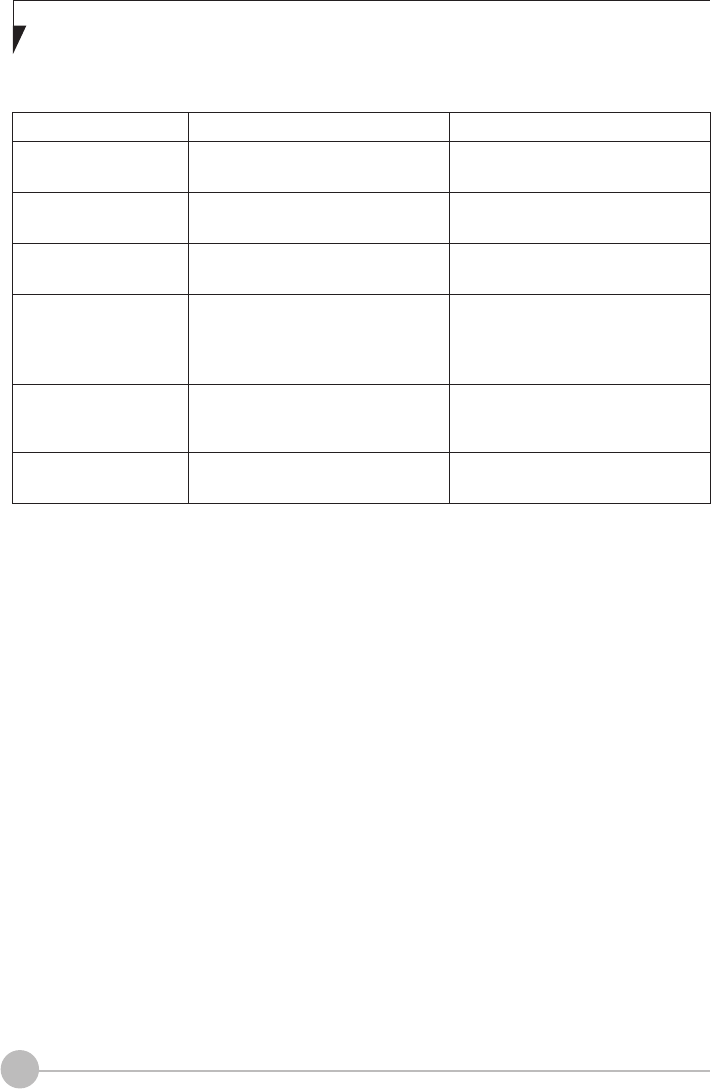
12
Handling
Open menu entries
Selecting menu
entries
Starting programs
Moving
objects/windows
Opening a context
menu
Moving the cursor
Mouse
Click with the right mouse button.
Click with the left mouse button.
Double click with the left mouse
button.
Drag with the left mouse button
pressed and held.
Click with the right mouse button.
-
Pen
Push the Pen button.
Touch the menu entry with the
pen tip.
Briefly touch the program icon
twice with the pen tip.
Place the pen tip directly on the
object/window. Press and hold
the pen tip against the screen.
Move the desired object/window.
Touch the desired element with
the pen and leave the pen on the
element for a moment.
Hover the pen tip over the screen.
Setting the Pen

13
Getting to Know Your STYLISTIC
Using the Integrated Digitizer
The integrated Digitizer allows you to use the
included pen as a pointing device. You can
use the pen to click, double-click, drag items
and icons, or to draw like a pen or pencil in
applications that support this behavior, such
as drawing or painting programs. See the
documentation that came with your application
for details.
Using the pen with the screen
To avoid potential scratching and damage,
never use anything but the included pen
with the display.
Clicking
To left-click, touch the object you wish to select
and then lift the pen tip immediately.
To right-click, press the pen button on the
barrel or touch the pen to the screen for a
couple of seconds until the right mouse icon
appears at the tip.
Double-clicking
To double-click, touch the item twice, and
then immediately remove the pen tip from the
screen.
Double-clicking the screen
•
•
If the interval between taps is too long,
the double-click will not be executed.
Parameters for the Touch Screen can
be adjusted from the Mouse Properties
dialog box located in the Windows
Control Panel.

14
Using Your
STYLISTIC
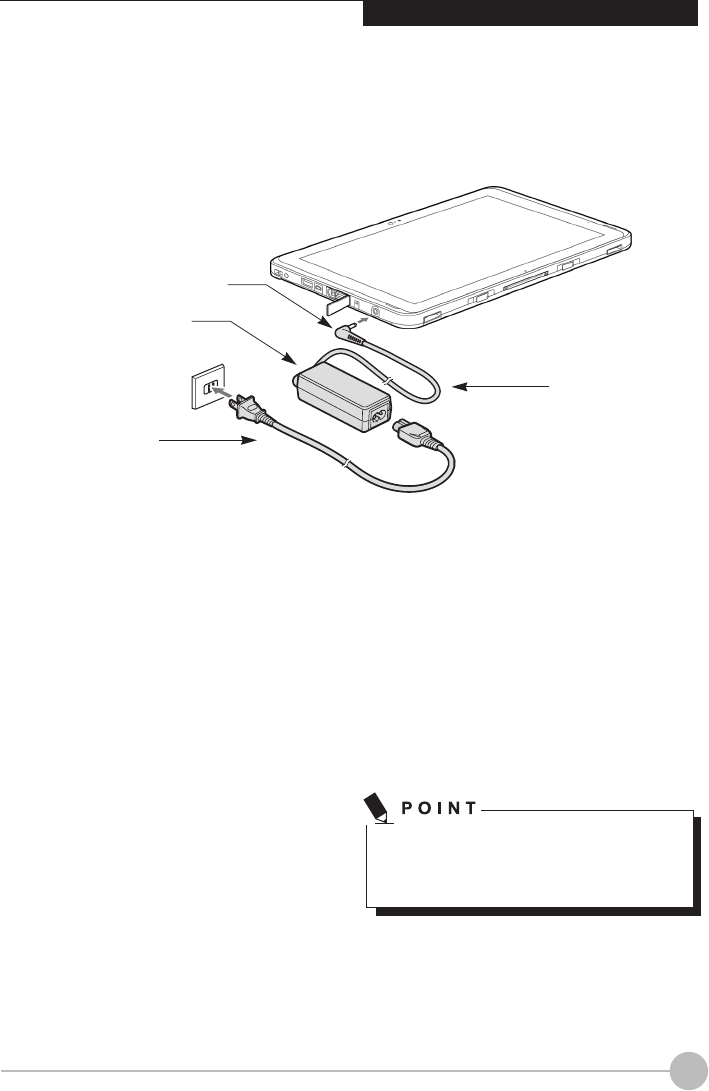
15
Connecting the AC Adapter
Connecting the AC Adapter
The AC adapter provides power for operating
your Tablet PC and charging the batteries.
Connecting the AC Adapter
1. Plug the DC output cable into the DC-in on
your Tablet PC.
2. Plug the AC adapter into an AC electrical
outlet.(Above Figure)
Switching from AC Adapter Power to Battery
Power
1. Be sure that you have a charged battery
installed.
2. Remove the AC adapter.
The Lithium ion battery is not charged
upon purchase. Initially, you will need to
connect the AC adapter to use your Tablet
PC.
DC Output Cable
DC Power Plug
AC Adapter
AC Cable
Using Your STYLISTIC
Power Sources
Your Fujitsu STYLISTIC Q507 has two possible
power sources: a primary Lithium ion battery
and an AC adapter.
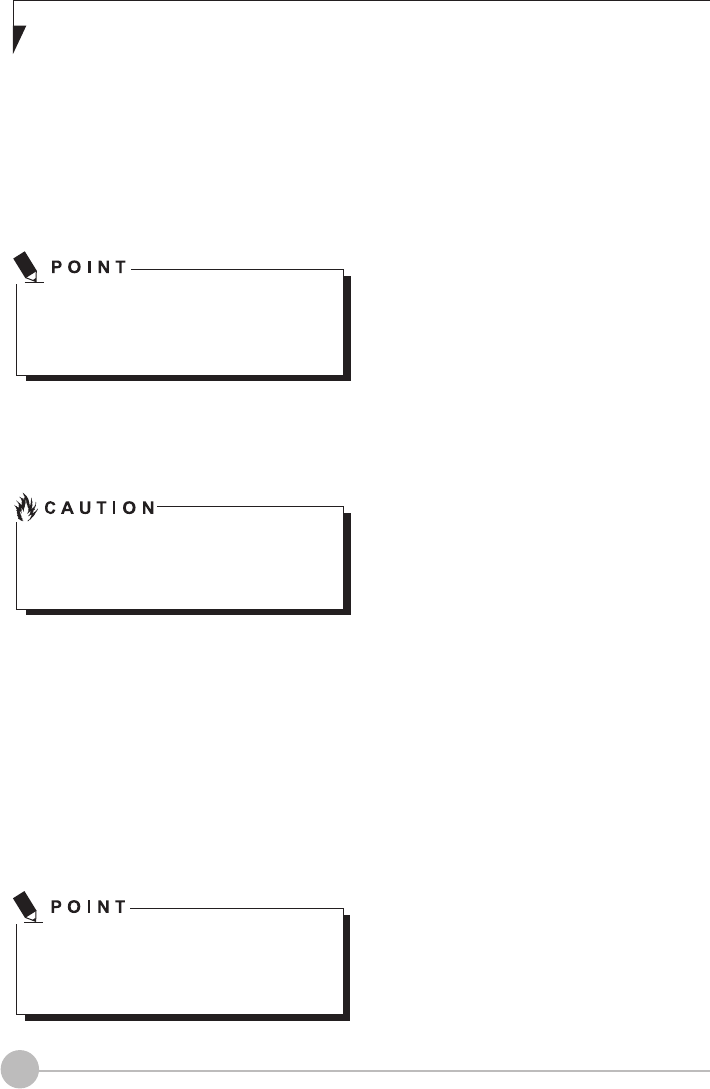
16
Starting Your Tablet PC
Power On
The Power/Suspend/Resume button is used
to turn on your Fujitsu STYLISTIC Q507 from
its off state. Once you have connected your
AC adapter or charged the internal Lithium Ion
Battery, you can power on your Tablet PC.
When you turn on your Tablet PC be sure
you have a power source. This means that
a battery is installed and charged, or that the
AC adapter is connected and has power.
Press the Power/Suspend/Resume button to
start your system. When you are done working
you can either leave your Tablet PC in Standby
mode, or you can turn it off.
When the system display is closed, the
Suspend/Resume button is disabled. This
feature prevents the system from being
accidentally powered up when not in use.
When you Power On your Tablet PC, it will
perform a Power On Self Test (POST)
to check the internal parts and configuration
for correct functionality. If a fault is found,
your Tablet PC will emit an audio warning
and/or an error message will be
displayed. Depending on the nature of the
problem, you may be able to continue
by starting the operating system or by
entering the BIOS setup utility and revising
the settings.
After satisfactory completion of the Power On
Self Test (POST), your Tablet PC will load your
operating system.
Never turn off your Tablet PC during the
Power On Self Test (POST) or it will cause
an error message to be displayed when you
turn your Tablet PC on the next time.
Boot Sequence
The procedure for starting-up your Tablet PC
is termed the Bootup sequence and involves
your Tablet PC’s BIOS. When your Tablet PC
is first turned on, the main system memory
is empty, and it needs to find instructions to
start up your Tablet PC. This information is
in the BIOS program. Each time you power
up or restart your Tablet PC, it goes through
a boot sequence which displays a Fujitsu
logo until your operating system is loaded.
During booting, your Tablet PC is performing a
standard boot sequence including a Power On
Self Test (POST). When the boot sequence
is completed without a failure and without a
request for the BIOS Setup Utility, the system
displays the operating system’s opening
screen.
The boot sequence is executed when:
• You turn on the power to your Tablet PC.
• You restart your Tablet PC from the
Windows Shut Down Dialog box.
• The software initiates a system restart.
Example: When you install a new
application.
• You reset the system by pressing the
three keys [Ctrl+Alt+Del].
Warranty Registering for Your
Fujitsu STYLISTIC Q507
How do I register?
You can register your STYLISTIC by going to
our website:
http://solutions.us.fujitsu.com/www/
content/support/.
This helps us to better serve you.

17
Using Your STYLISTIC
Power Management
Your Fujitsu STYLISTIC has many options
and features for conserving battery power.
Some of these features are automatic and
need no user intervention, such as those for
the internal modem. However, others depend
on the parameters you set to best suit your
operating conditions, such as those for the
display brightness. Internal power
management for your Tablet PC may be
controlled from settings made in your
operating system, pre-bundled power
management application, or from settings
made in BIOS setup utility.
Besides the options available for conserving
battery power, there are also some things that
you can do to prevent your battery from quickly
running down. For example you can create
an appropriate power saving profile, put
your Tablet PC into Suspend mode when it
is not performing an operation and you can
limit the use of high power devices. As with
all mobile, battery powered computers, there
is a trade-off between performance and power
savings.
Power/Suspend/Resume Button
When you STYLISTIC is active, the Power/
Suspend/Resume button can be used to
manually place your Tablet PC into
Suspend mode. Push the Power/
Suspend/Resume button when your Tablet
PC is active, but not actively accessing
anything, and immediately release the
button. You will hear two short beeps* and
your system will enter Suspend mode.
If your STYLISTIC is suspended, pushing the
Power/Suspend/Resume button returns your
Tablet PC to active operation. You can tell
whether the system is suspended by looking at
the Power indicator. If the indicator is visible
and not flashing, your Tablet PC is fully
operational. If the indicator is visible and
flashing, your notebook is in Suspend mode.
If the indicator is not visible, the power is off
or your Tablet PC is in Hibernation mode.
(See Hibernation Feature)
*Only applicable for some models
Suspend Mode
Suspend or Standby mode in Windows
saves the contents of your STYLISTIC
system memory during periods of inactivity by
maintaining power to critical parts. This mode
will turn off the CPU, the display, the hard drive,
and all of the other internal components except
those necessary to maintain system memory
and allow for restarting. Your Tablet PC can be
put in Suspend mode by:
• Pressing the Power/Suspend/Resume
button when your system is turned on.
• Selecting Standby from the Windows Shut
Down menu.
• Timing out from lack of activity.
• Allowing the battery to reach the Dead
Battery warning condition.
Your STYLISTIC system memory typically
stores the file which you are working on,
open application information, and any other
data required to support operation from
Suspend mode, your Tablet PC will return to
the point where it left off. You must press the
Power/Suspend/Resume button to resume
operation, and there must be as adequate
power source available, or your Tablet PC will
not resume.

18
Hibernation (Save-To-Disk) Feature
The Hibernation feature saves the contents of
your STYLISTIC system memory to the hard
drive as a part of the Suspend/Resume mode.
You can enable or disable this feature.
Enable or Disable the Hibernation Feature
Windows 10:
1. Go to Control Panel.
2. Select "System and Security" and then
select "Power Options"
3. Select "Change what the power button
does", and click "Change settings that
are currently unavailable".
4. Under "Shutdown Setting", select the
Hibernate tab. Select the box to enable or
disable this feature and click "Save
changes" to apply.
•
•
•
•
•
If you are running your STYLISTIC in
battery power, be aware that the
battery continues to discharge while
your Tablet PC is in Suspend mode,
though not as fast as when fully
operational.
Disabling the Power/Suspend/Resume
button prevents it from being used to
put your STYLISTIC in Suspend or
Hibernation (Save-to DIsk) mode. The
resume function of the button cannot
be disabled.
The suspend or hibernation(Save-to
-Disk) mode should not be used with
certain PC cards. Check your PC Card
documentation for more information.
When PC Cards or external devices
are in use, Hibernation(Save-to-Disk)
mode cannot return to the exact state
prior to suspension, because all of the
peripheral devices will be re-initialized
when the system restarts.
If your STYLISTIC is actively accessing
information when you enter the
Suspend or Hibernate (Save-to Disk)
mode, changes to open files are not
lost. The les are left open and memory
is kept active during Suspend mode
or the memory is transferred to the
internal hard drive during hibernation
mode.
The main advantage of using the
Hibernation(Save-to-Disk) function is
that power is not required to maintain
your data. This is particularly important
if you will be leaving your STYLISTIC
in a suspended state for a prolonged
period of time. The drawback of using
Hibernation mode is that it lengthens
the power down and power up
sequences and resets peripheral
devices.
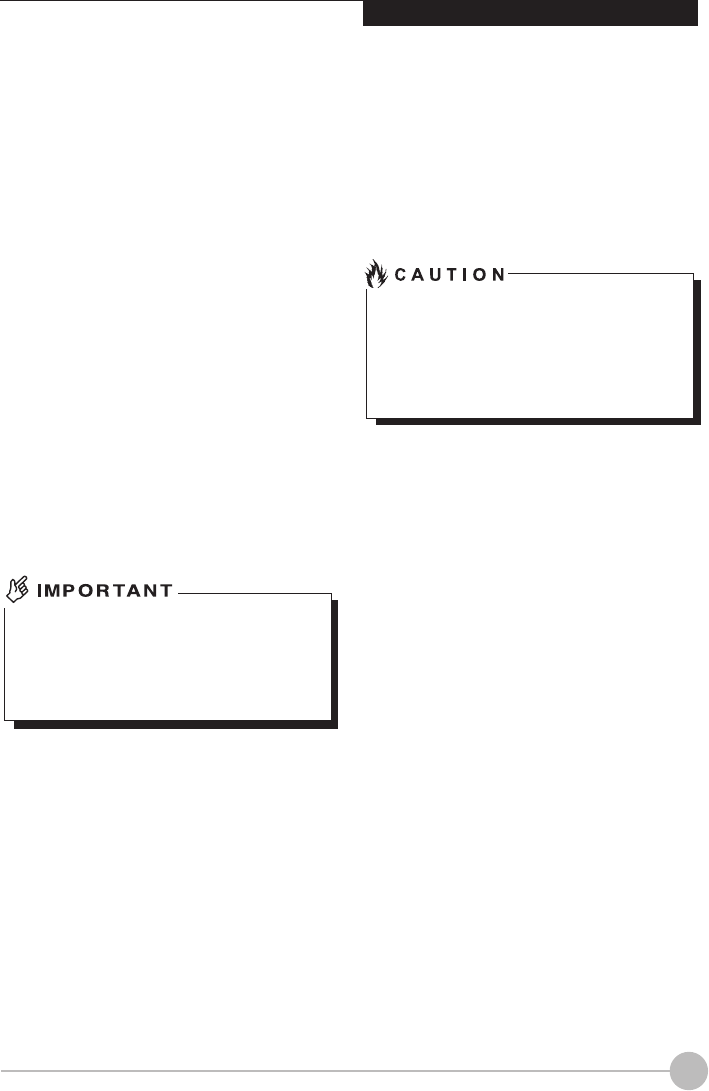
19
Using Your STYLISTIC
Windows Power Management
The Power Options icon located in the Windows
Control Panel allows you to congure some of
the power managment settings. For example,
you can use the Power Options to set the
timeout values for turning off the display and
hard disks whether you are running the Tablet
PC on battery power or the AC adapter.
Restarting the System
If your system is on and you need to restart it,
be sure that you use the following procedure.
Windows 10
1. Click the Windows icon
2. Click Power, and select Restarting from
the list.
Turning off your STYLISTIC without
exiting Windows or turning on your Tablet
PC within 10 seconds of the Tablet PC
being shut off may cause an error when
you start the next time.
Power Off
Before turning off power, check that the hard
drive/optical drive access indicator is off. If you
turn off the power while accessing a disk there
is a risk of data loss. To ensure that your Tablet
PC shuts down without error, use the Windows
shut down procedure.
Be sure to close all files, exit all
applications, and shut down your operating
system prior to turning off the power. If les
are open when you turn the power off, you
will lose any changes that have not been
saved, and may cause disk errors.
Using the correct procedure to shut down from
Windows allows your Tablet PC to complete
its operations and turn off power in the
proper sequence to avoid errors. The proper
sequence is:
Windows 10
1. Click the Windows icon
2. Click Power, and select Shut down
from the list.
If you are going to store your Tablet PC for a
month or more, see Care and Maintenance
Section.

20
Troubleshooting
and WLAN
Specifications
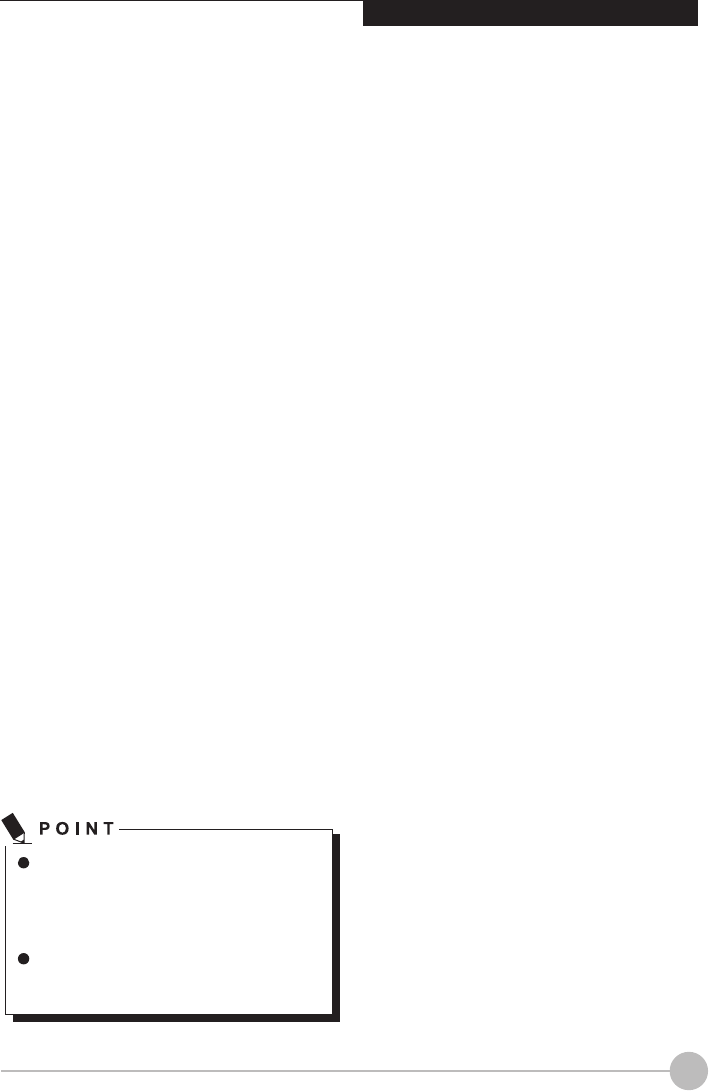
21
Troubleshooting
Your Fujitsu STYLISTIC Q507 is sturdy and
subject to few problems in the field. However,
you may encounter simple setup or operating
problems that you can solve on the spot, or
problems with peripheral devices, that you can
solve by replacing the device. The information
in this section helps you isolate and resolve
some of these straightforward problems and
identify failures that require service.
Identifying the Problem
If you encounter a problem that you are
having difficulty in solving, go through the
following procedure before pursuing further
troubleshooting.
1. Turn off your Tablet PC.
2. Make sure the AC adapter is plugged into
your Tablet PC and to an active AC power
source.
3. Make sure that any card installed in the PC Card
slot is seated properly. You can also remove
the card from that slot, thus eliminating it as a
possible cause of failure.
4. Make sure that any devices connected to the
external connectors are plugged in properly.
You can also disconnect such devices, thus
eliminating them as possible causes of
failure.
5.Turn on your Tablet PC. Make sure it has
been off at least 10 seconds before you turn
it on.
6. Go through the boot sequence.
If you keep notes about what you have
tried, your support representative may
be able to help you more quickly by
giving additional suggestions over the
phone.
Do not return a failed Tablet PC to
your supplier until you have talked to a
support representative.
Before you place the call, you should have
the following information ready so that the
customer support representative can provide
you with the fastest possible solution:
• Product name
• Product conguration number
• Product serial number
• Purchase date
• Conditions under which the problem occurred
• Any error messages that have occurred
• Hardware conguration
• Type of device connected, if any
See the Configuration Label on the bottom
of your Tablet PC for configuration and serial
number.
Troubleshooting
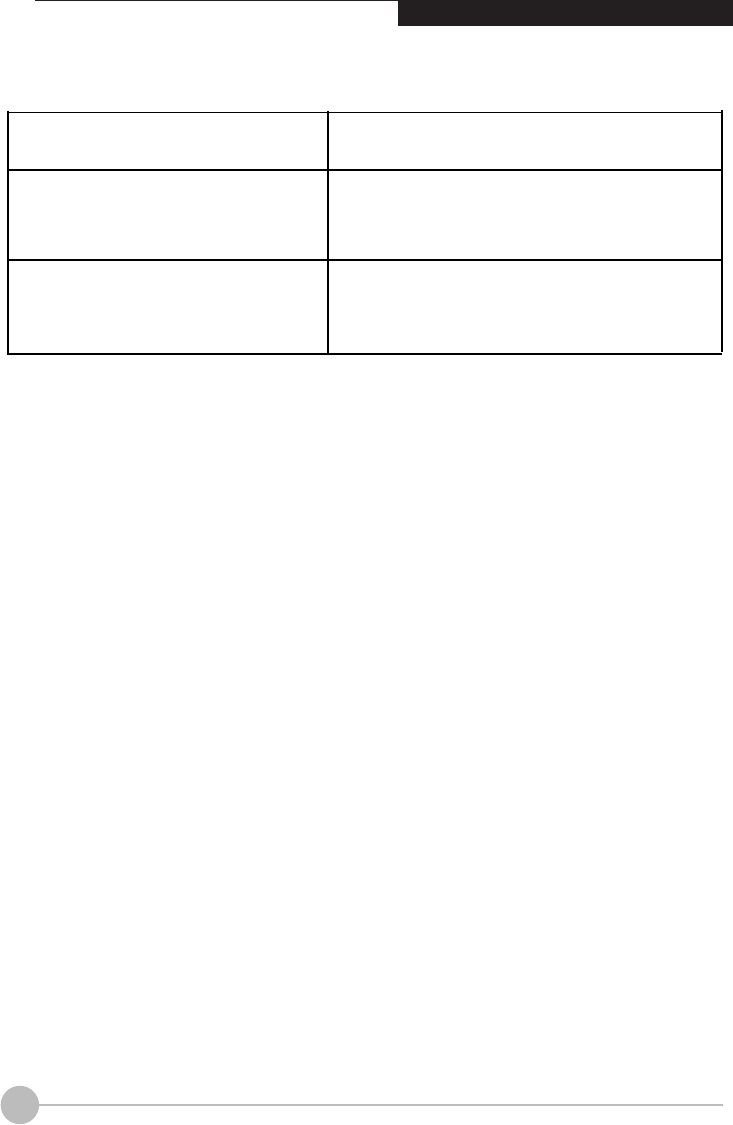
Type of network Intel® Dual Band Wireless-AC 7265 2x2
ac/a/b/g/b/n with integrated Bluetooth 4.1
Transfer rate (Automatic switching) IEEE802.11 a and g: 54
Mbps max. data rate; IEEE802.11n: 300 Mbps
max. data rate, IEEE802.11ac: 867 Mbps max.
data rate
Active frequency • 802.11n: 2.4 GHz or 5 GHz
• 802.11b/g: 2,400~2,483.5 MHz
• 802.11a. 5150~5850 MHz
• 802.11ac: 2.4 GHz / 5 GHz
22
WLAN specifications

FCC and IC
Regulatory
Information
5
23

FCC and IC Regulatory Information
24
FCC & IC Regulatory Information
Please note the following regulatory information related to the wireless LAN
device.
Regulatory Notes and Statements
Wireless LAN, Health and Authorization for use
Radio frequency electromagnetic energy is emitted from Wireless LAN devices. The energy levels of
these emissions, however, are far much less than the electromagnetic energy emissions from wireless
devices such as mobile phones. Wireless LAN devices are safe for use by consumers because they
operate within the guidelines found in radio frequency safety standards and recommendations. The
use of Wireless LAN devices may be restricted in some situations or environments, such as:
• On board an airplane, or
• In an explosive environment, or
• In situations where the interference risk to other devices or services is
perceived or identified as harmful.
In cases in which the policy regarding use of Wireless LAN devices in specific environments is
not clear (e.g., airports, hospitals, chemical/oil/gas industrial plants, private buildings), obtain
authorization to use these devices prior to operating the equipment.
Regulatory Information/Disclaimers
Installation and use of this Wireless LAN device must be in strict accordance with the instructions
included in the user documentation provided with the product. Any changes or modifications made
to this device that are not expressly approved by the manufacturer may void the user’s authority to
operate the equipment. The manufacturer is not responsible for any radio or television interference
caused by unauthorized modification of this device, or the substitution or attachment of connecting
cables and equipment other than those specified by the manufacturer. It is the responsibility of the
user to correct any interference caused by such unauthorized modification, substitution or attachment.
The manufacturer and its authorized resellers or distributors will assume no liability for any damage
or violation of government regulations arising from failure to comply with these guidelines.
This device must not be co-located or operated in conjunction with any other antenna or transmitter.

25
FCC & IC Regulatory Information
Federal Communications Commission and Industry
Canada statement:
This device complies with Part 15 of FCC Rules and Industry Canada license exempt RSS standard(s).
Operation is subject to the following two conditions: (1) This device may not cause
interference, and, (2) This device must accept any interference, including interference
that may cause undesired operation of this device.
Déclaration d’Industrie Canada
Cet appareil est conforme à la Section 15 des Règles de la FC C et à la ( aux) norme(s)
RSS concernant les appareils exempt s de licence par Industrie Canada. Son fonctionnement
est soumis aux deux condition s suivantes : (1) cet appareil ne doit pas causer d’interférence
nuisib le; (2) cet appareil doit accepter toutes les interférences reçues, y compris celles
pouvan t causer un mauvais fonctionnement de l’appareil.
FCC Interference Statement
This equipment has been tested and found to comply with the limits for a Class B digital
device, pursuant to Part 15 of the FCC Rules. These limits are designed to provide reasonable
protection against harmful interference in a residential installation. This equipment generates,
uses, and can radiate radio frequency energy. If not installed and used in accordance with
the instructions, it may cause harmful interference to radio communications. However, there
is no guarantee that interference will not occur in a particular installation.
If this equipment does cause harmful interference to radio or television reception, which
can be determined by turning the equipment off and on, the user is encouraged to try and
correct the interference by one or more of the following measures:
1. Reorient or relocate the receiving antenna.
2. Increase the distance between the equipment and the receiver.
3. Connect the equipment to an outlet on a circuit different from the one the receiver is connected to.
4. Consult the dealer or an experienced radio/TV technician for help.

26
FCC & IC Regulatory Information
FCC Radio Frequency Exposure statement
The available scientific evidence does not show that any health problems are associated with
using low power wireless devices. There is no proof, however, that these low power wireless
devices are absolutely safe. Low power wireless devices emit low levels of radio frequency
energy (RF) in the microwave range while being used. Whereas high levels of RF can produce
health effects (by heating tissue), exposure to low-level RF that does not produce heating
effects causes no known adverse health effects. Many studies of low-level RF exposure have
not found any biological effects. Some studies have suggested that some biological effects
might occur, but such findings have not been confirmed by additional research.
The exposure standard for wireless devices employs a unit of measurement known as the Specific
Absorption Rate, or SAR. The SAR limit set by the FCC is 1.6W/kg, and 1.6W/kg by Industry Canada.
This device is compliant with SAR for general population /uncontrolled exposure limits in
ANSI/IEEE C95.1-1992 and Canada RSS 102, and had been tested in accordance with
the measurement methods and procedures specified in)&&&)55XOH3DUWDQG,
and Canada RSS 102. This device has been tested, and meets the FCC, IC RF exposure
guidelines when tested with the device operating conditions.
Déclaration de la FCC/d’Industrie Canada sur
l’exposition aux radiofréquences
La norme régissant l’exposition des appareils sans fil aux radiofréquences emploie une unité
de mesure dénommée Taux d’absorption spécifique, ou TAS. La FCC et Industrie Canada ont
défini la même limite de TAS : 1,6 W/kg. Cet appareil est conforme au TAS pour les limites
d’exposition générales de la population/non contrôlées définies par les règles C95.1-1992 de
l’ANSI/IEEE et RSS 102 d’Industrie Canada ; il a été testé en conformité avec les méthodes
et procédures de mesure spécifiées dans le)&&&)55XOH3DUWDQG (O
d’ingénierie et de technologie) et la règle RSS 102 d’Industrie Canada. Cet appareil a été testé
selon les directives de la FCC et d’IC concernant l’exposition aux radiofréquences et s’est révélé
conforme à ces dernières lorsqu’il a été testé en contact direct avec le corps.
Export restrictions
This product or software contains encryption code which may not be exported or transferred
from the US or Canada without an approved US Department of Commerce export license.
This device complies with Part 15 of FCC Rules., as well as ICES 003 B / NMB 003 B.
Operation is subject to the following two conditions: (1) this device may not cause harmful
interference, and (2) this device must accept any interference received, including interference
that may cause undesirable operation. Modifications not expressly authorized by Fujitsu
America, Inc. may invalidate the user’s right to operate this equipment.

27
FCC & IC Regulatory Information
Restrictions concernant l’exportation
Ce produit ou logiciel contient du code de chiffrement qui ne peut être exporté ou transféré du
Canada ou des États-Unis sans un permis d’exportation du département du commerce des
États-Unis. Ce matériel est conforme à la Partie 15 des règlements de la FCC, ainsi qu’à la
norme ICES 003 B/NMB 003 B. Son fonctionnement est soumis aux deux conditions suivantes
: (1) cet appareil ne doit pas causer d’interférence nuisible; (2) cet appareil doit accepter
toutes les interférences reçues, y compris celles pouvant causer un mauvais fonctionnement
de l’appareil. Toute modification n’ayant pas été expressément approuvée par la société Fujitsu
America Incorporated peut annuler le droit de l’utilisateur de se servir du matériel.
Canadian Notice
The device for the 5150 - 5250 MHz band is only for indoor usage to reduce the potential for
harmful interference to co-channel mobile satellite systems.
In addition, users are cautioned to take note that high power radars are allocated as primary
users (meaning they have priority) of 5250 - 5350 MHz and 5650 - 5850 MHz and these radars
could cause interference and/or damage to LE-LAN devices.
Avis pour le Canada
Le périphérique pour la bande 5150 - 5250 MHz est uniquement destiné à une utilisation à
l'intérieur de l'intérieur afin de réduire le risque d'interférences nuisibles aux systèmes de satellites
mobiles co-canaux.
Un gain d’antenne de 6 dBi est autorisé (pour le matériel utilisant les bandes 5 250 - 5 350
MHz, 5 470 - 5 725 MHz et 5 725 - 5 825 MHz), conformément à la limite p.i.r.e. maximale
permise selon l’annexe A9.2 afférent aux périphériques RSS210.
En outre, les utilisateurs doivent prendre garde au fait que les radars de grande puissance sont
considérés comme des utilisateurs principaux (ce qui signifie qu’ils sont prioritaires) des bandes 5
250 - 5 350 MHz et 5 650 - 5 850 MHz et qu’ils pourraient causer des interférences et/ou des
dommages aux appareils de réseau exempts de licence.
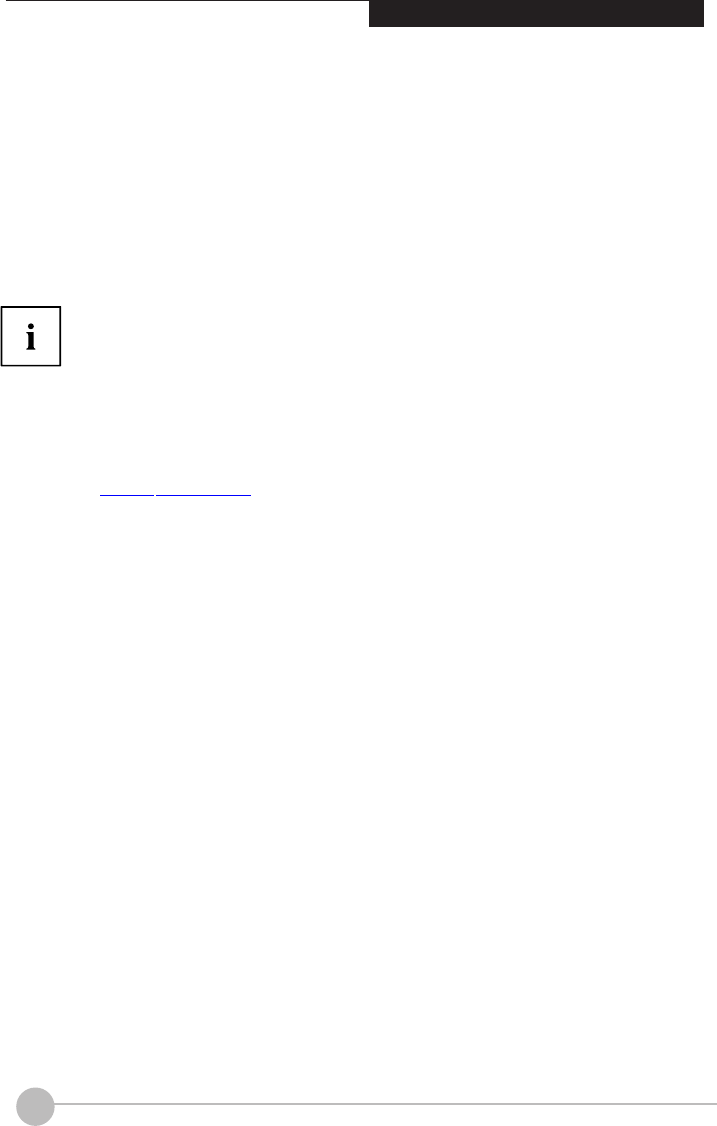
28
FCC & IC Regulatory Information
Using the Bluetooth Device
Bluetooth is integrated into the Wireless LAN module. The Bluetooth capabilities are Bluetooth
Basic, EDR and Bluetooth Low Energy (BT v4.0) operational modes.
What is Bluetooth
Bluetooth technology is designed as a short-range wireless link between mobile devices, such
as laptop computers, phones, printers, and cameras. Bluetooth technology is used to create
Personal Area Networks (PANs) between devices in short-range of each other.
Proceed as follows to individually enable or disable wireless LAN or Bluetooth devices:
1. Switch on the WLAN/Bluetooth via the key combination Fn +F5 .
2. In the screen Modern Start, select the option Charms > Settings
> Change PC Settings > Wireless.
3. Under Wireless > Wireless Devices, click on the switch Bluetooth to switch on Bluetooth.
Where to Find Information About Bluetooth
For additional information about Bluetooth Technology, visit the Bluetooth
Web site at: "www.bluetooth.com".
FCC Radiation Exposure Statement
This system complies with the FCC limit values for radio frequency radiation in an uncontrolled
environment. The Bluetooth antenna is located at the top edge of the LCD screen and is exempt
from the criteria for minimum distance because of its low power consumption.
The transmitter used in this system must not be operated together with other antennas or transmitters.
Canadian Notice
To prevent radio interference to licensed services, this system is designed for use in indoor spaces
/ in buildings and not directly at window openings, to allow a maximum shielding.
Warranty
Users are not authorized to modify this product. Any modifications invalidate the warranty.
This equipment may not be modified, altered, or changed in any way without signed
written permission from Fujitsu. Unauthorized modification will void the equipment
authorization from the FCC and Industry Canada and the warranty.